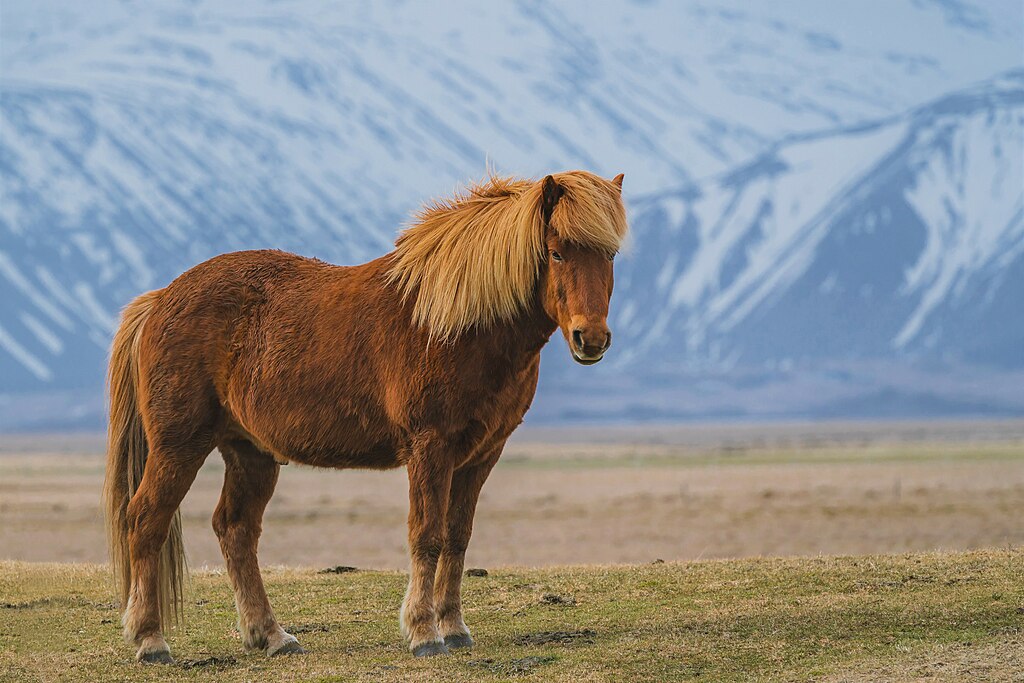Draft horses, with their impressive stature and remarkable strength, have been essential partners to humans for centuries. These gentle giants were developed specifically for tasks requiring substantial pulling power – from plowing fields and logging to transporting heavy goods and military equipment. While modern machinery has largely replaced the need for working draft horses in many industries, these magnificent breeds still maintain important roles in sustainable farming, logging operations in sensitive environments, and various cultural traditions. Their natural strength, willing disposition, and historical significance make them fascinating subjects of study. In this comprehensive guide, we’ll explore the most exceptional draft horse breeds renowned for their pulling capabilities, examining their unique characteristics, historical significance, and the qualities that make them superior for heavy hauling tasks.
Belgian Draft: The Powerhouse of Draft Breeds
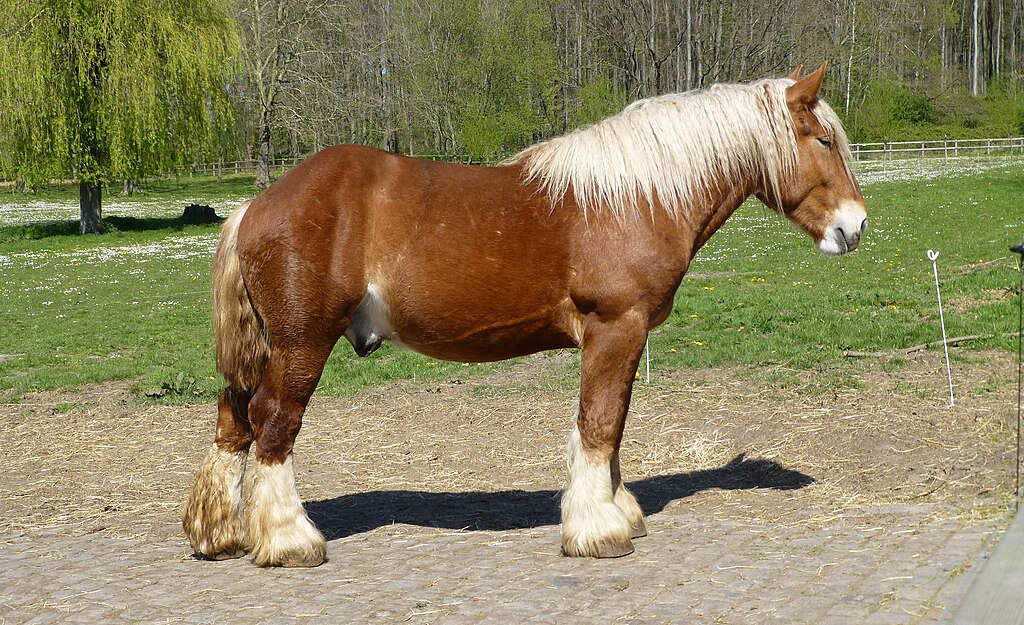
The Belgian Draft stands as perhaps the most recognized and widely used draft breed in America today, having earned its reputation through unparalleled strength and pulling capability. Originating from the Brabant region of Belgium, these horses typically weigh between 1,800 and 2,200 pounds, with exceptional specimens reaching over 3,000 pounds. Their relatively compact, muscular build provides an excellent center of gravity, making them especially efficient at pulling heavy loads with steady, consistent power. Belgians are characterized by their chestnut coloring with flaxen mane and tail, though roans and sorrels also appear within the breed. Their willing temperament and patient disposition make them ideal working partners capable of maintaining steady effort over long periods, qualities that have contributed to their enduring popularity among teamsters and farmers.
Percheron: The Versatile French Giant
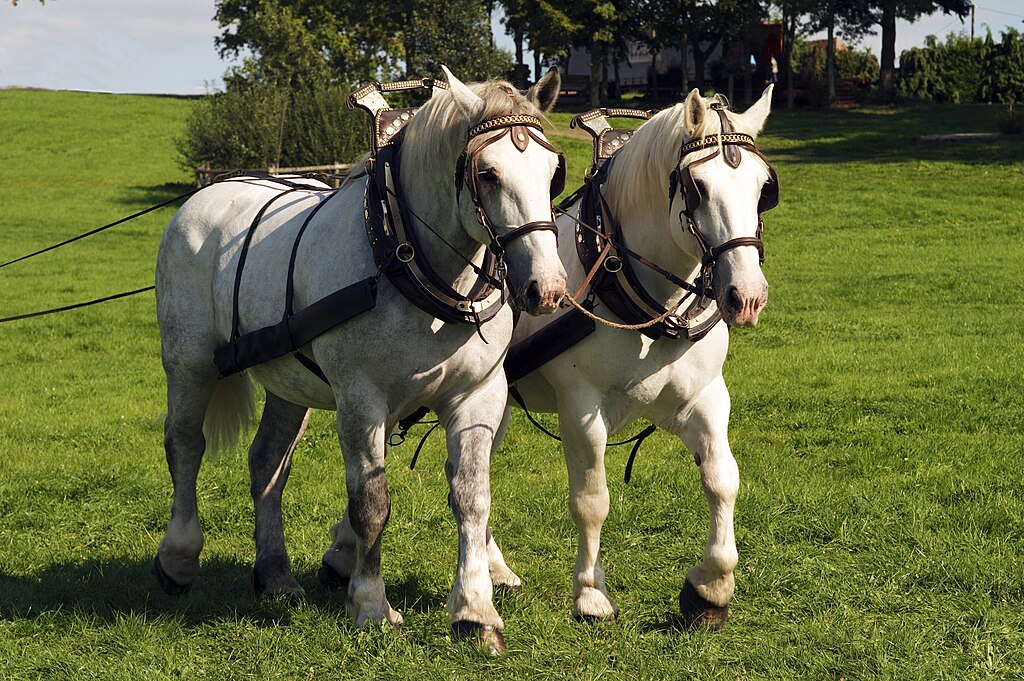
Percherons originated in the La Perche region of France, where they were initially bred as war horses before transitioning to agricultural and draft purposes. These impressive horses typically stand between 16 and 18 hands high and weigh 1,800 to 2,600 pounds, combining strength with surprising agility and an energetic disposition. Most commonly seen in black or gray, Percherons possess a more refined head than many draft breeds, revealing their partial Arabian ancestry that contributes to their alert expression and spirited nature. This unique combination of power and energy makes Percherons exceptionally versatile draft horses, capable of pulling heavy loads while maintaining a faster pace than many other draft breeds. Their adaptability to various climates and working conditions has made them popular worldwide, from the logging forests of America to the agricultural fields of Europe.
Clydesdale: The Spectacular Scottish Draft
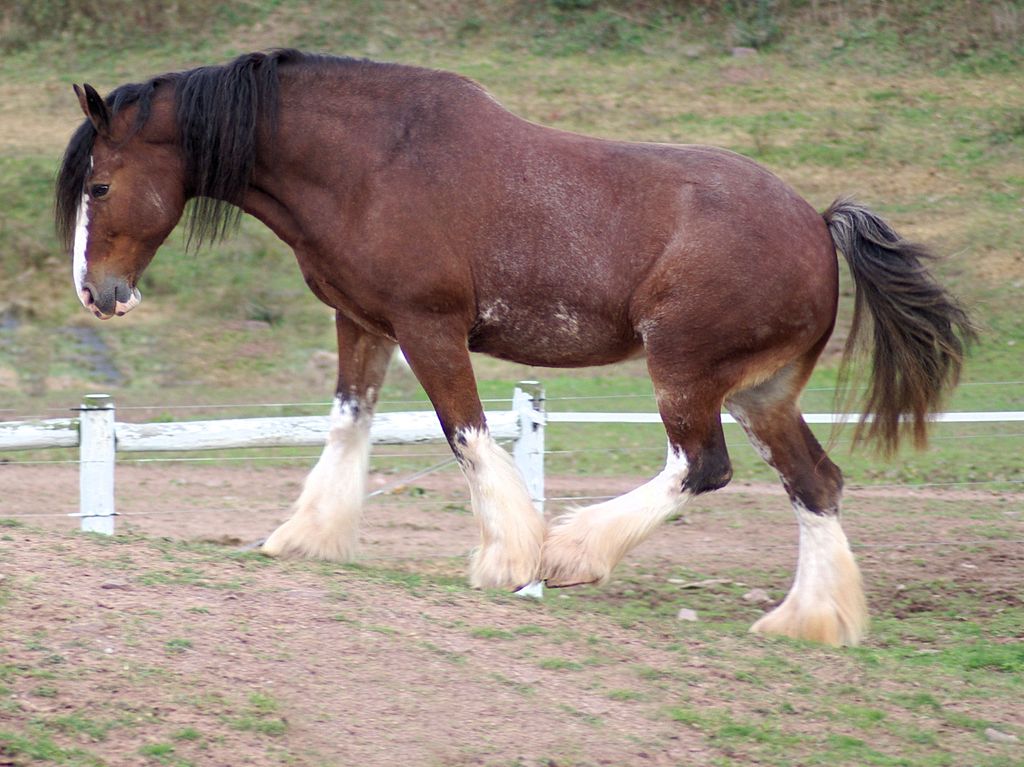
Perhaps most famous for their association with the Budweiser brand, Clydesdales are instantly recognizable with their distinctive feathering (long hair) on the lower legs and high-stepping gait that creates a spectacular visual display. Developed in Scotland near the River Clyde, these horses typically stand 16 to 18 hands tall and weigh between 1,800 and 2,000 pounds, with bay or brown being the predominant colors, often accompanied by white markings on the face and legs. While not the heaviest of draft breeds, Clydesdales possess remarkable strength combined with a flashy appearance and active movement that makes them ideal for both work and show purposes. Their intelligent, gentle temperament makes them exceptionally trainable, which has contributed to their popularity in public demonstrations, parades, and commercial applications where both power and visual appeal are required.
Shire: The English Giant
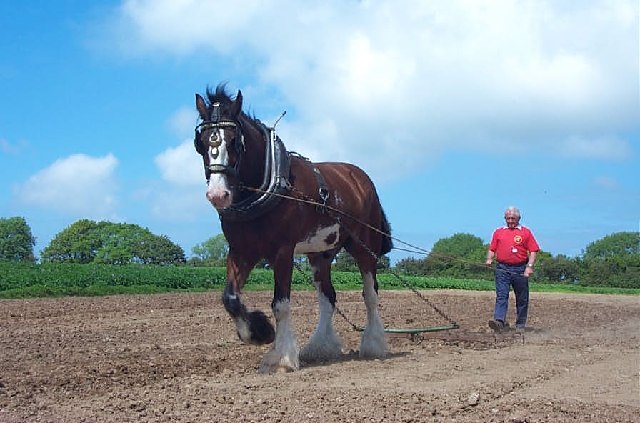
The Shire horse holds records as one of the largest horse breeds in the world, with specimens regularly standing 17 to 19 hands high and weighing between 1,800 and 2,400 pounds. Developed in England for farm work, war, and pulling heavy loads in industrial settings, these massive horses are characterized by their abundant feathering, substantial bone structure, and impressive height. Traditionally black, bay, or gray in color, Shires combine immense power with a docile, willing temperament that makes them surprisingly manageable despite their intimidating size. Their pulling capacity is legendary, with historical records noting their ability to move loads exceeding 45 tons when working in teams. Despite their enormous strength, Shires are known for their gentle nature, earning them the nickname “gentle giants” among those who work with them regularly.
Suffolk Punch: The Tireless Worker
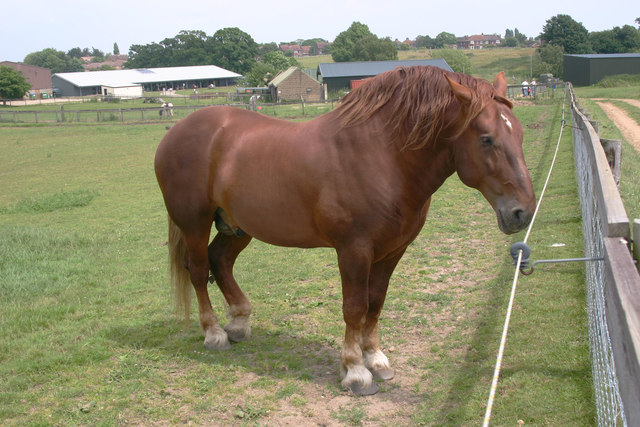
The Suffolk Punch stands apart from other draft breeds with its uniformly chestnut coloring (locally called “Suffolk Sorrel”) and complete lack of white markings, creating a distinctive appearance that reflects its pure breeding lineage dating back to the 16th century. Native to eastern England, these horses are somewhat smaller than other draft breeds, typically standing 16 to 17 hands high and weighing 1,900 to 2,200 pounds, with a compact, muscular build characterized by powerful shoulders and hindquarters. What Suffolk Punches lack in size, they make up for in stamina and efficiency, with extraordinary endurance that allows them to work tirelessly for extended periods. Their clean legs (without feathering) require less maintenance than other draft breeds, making them particularly practical for everyday working conditions in agricultural settings.
American Cream Draft: America’s Native Draft Breed
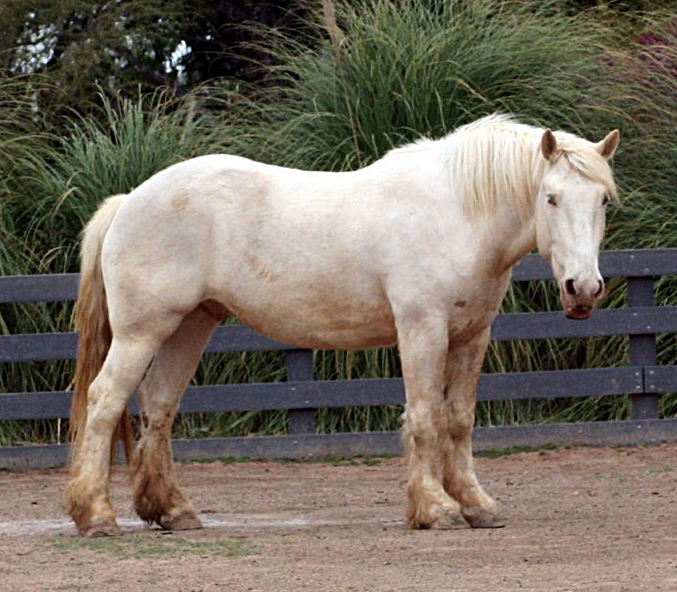
As the only draft horse breed developed entirely within the United States, the American Cream Draft represents an important piece of American agricultural heritage. Distinguished by their cream or gold coloration, amber eyes, and white mane and tail, these horses present a striking appearance that sets them apart from other draft breeds. Standing 15.1 to 16.3 hands high and weighing 1,500 to 1,800 pounds, they are somewhat smaller than other draft breeds but possess substantial pulling power for their size. The breed developed from a foundation mare named Old Granny who was born in Iowa in the early 1900s and passed her distinctive cream coloration to her offspring. Despite being critically endangered with fewer than 400 registered animals worldwide, American Cream Drafts continue to demonstrate excellent working capabilities, combining strength with a willing, gentle disposition ideal for both work and recreational purposes.
Dutch Draft: The Powerful Lowland Puller
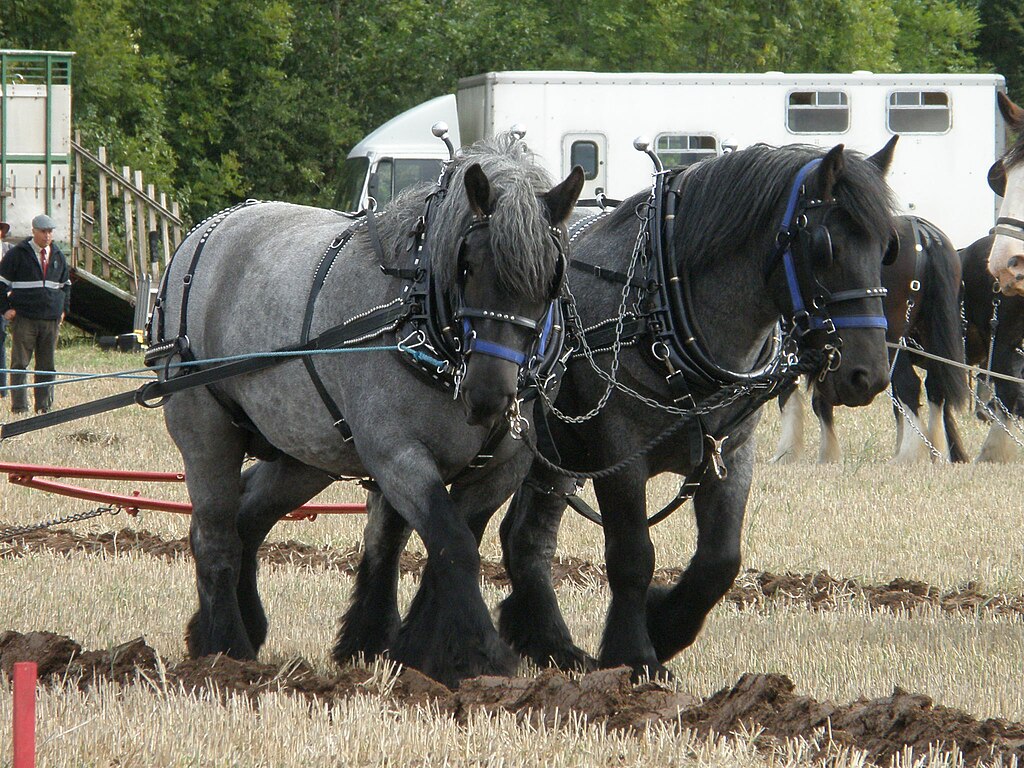
The Dutch Draft (also known as Nederlands Trekpaard) developed in the Netherlands through crossing local heavy horses with Belgian Drafts, creating a powerful working animal suited to the demanding conditions of the Low Countries. These substantial horses typically stand 15 to 17 hands high and weigh 1,500 to 1,700 pounds, with a broad, muscular build particularly well-developed through the chest and hindquarters. Most commonly seen in bay, roan, or chestnut coloration, Dutch Drafts possess abundant feathering on their lower legs similar to their Belgian ancestors. Their strength combined with a calm, steady disposition makes them exceptionally well-suited for heavy agricultural work in wet, difficult terrain where their broad hooves provide stability and prevent them from sinking into soft ground. Though less common outside Europe, Dutch Drafts continue to demonstrate impressive pulling capabilities that make them valuable working animals in their native region.
Ardennes: The Ancient Draft Breed
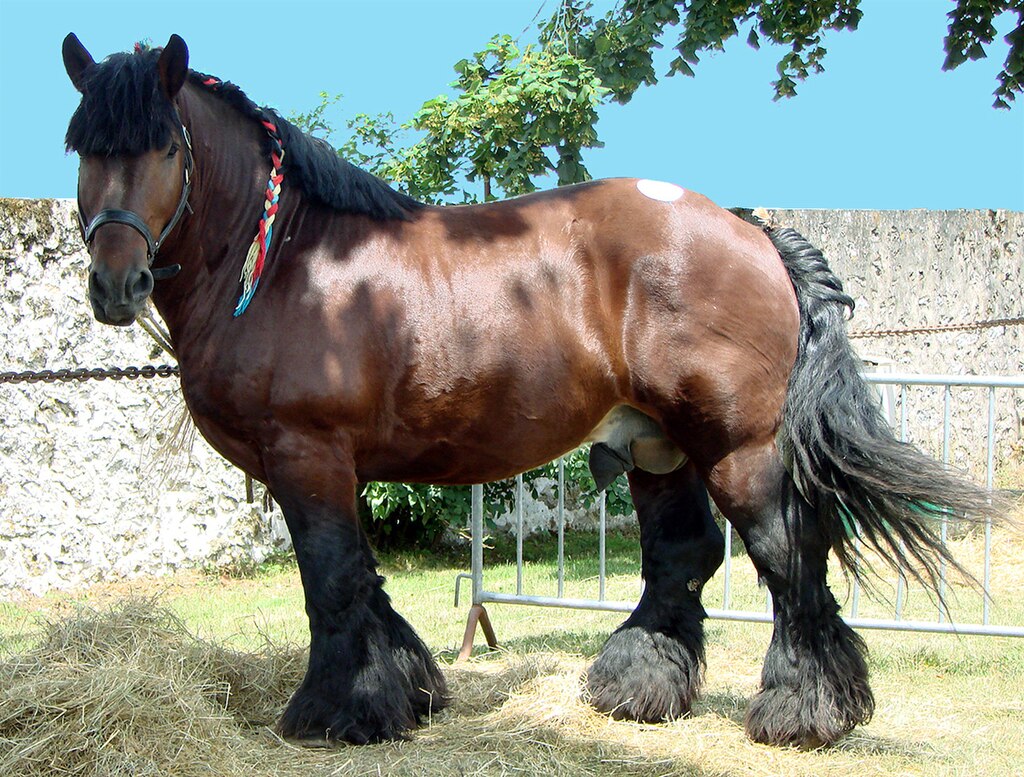
With a lineage dating back to ancient Rome, the Ardennes is one of the oldest draft horse breeds in the world, named after the Ardennes region spanning Belgium, Luxembourg, and France. These compact yet immensely powerful horses typically stand 15.3 to 16 hands high and weigh 1,500 to 2,200 pounds, with a broad, muscular build that emphasizes power over height. Their dense bone structure, wide chest, and powerful hindquarters make them exceptionally strong for their relatively modest size. Predominantly seen in roan, chestnut, and bay colorations, Ardennes horses possess thick winter coats that helped them survive the harsh conditions of their native region, including Napoleon’s disastrous Russian campaign where they were among the few horse breeds to survive in significant numbers. Their incredible strength-to-size ratio, steady temperament, and remarkable endurance in difficult conditions make them exceptional pulling horses for situations requiring both power and maneuverability in confined spaces.
Russian Heavy Draft: The Compact Powerhouse
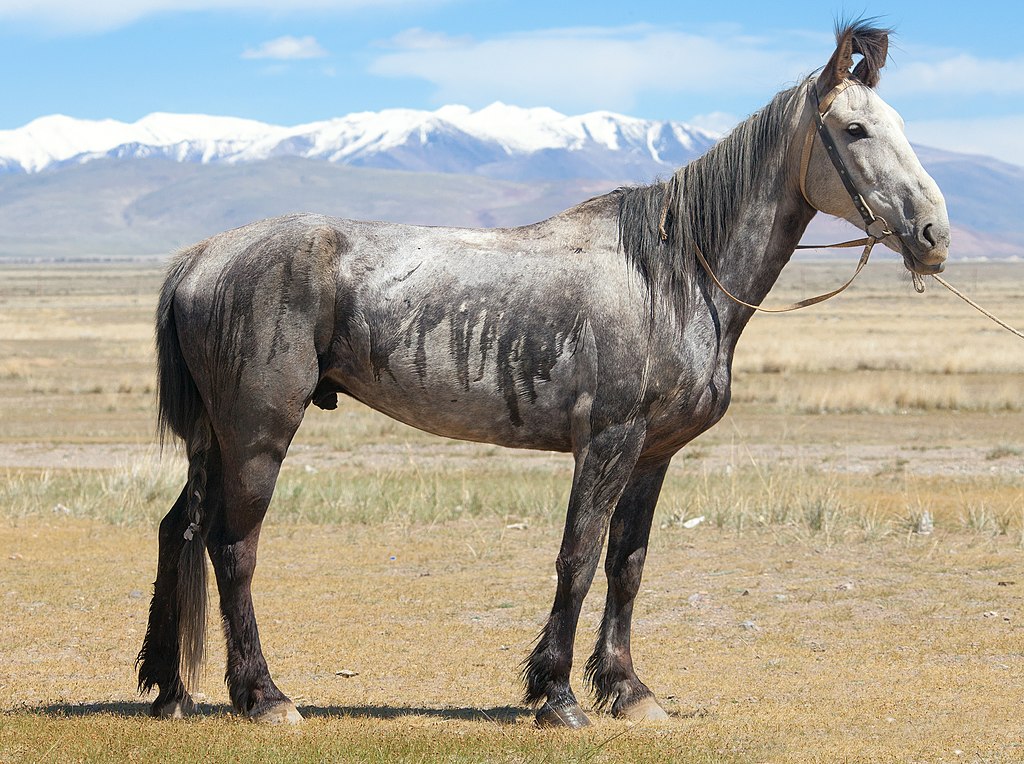
Developed in the late 19th century specifically to meet Russia’s agricultural and transportation needs, the Russian Heavy Draft (also known as the Soviet Heavy Draft) demonstrates remarkable efficiency in pulling heavy loads despite its relatively moderate size. Standing just 14.1 to 15.1 hands high and weighing 1,400 to 1,500 pounds, these horses possess exceptional strength-to-weight ratio, making them economical to maintain while still delivering impressive pulling power. Their compact, heavily muscled build features a wide chest, powerful shoulders, and strong hindquarters ideal for generating maximum traction. Typically chestnut with a flaxen mane and tail, Russian Heavy Drafts mature quickly and are known for their docile temperament, hardiness in extreme climates, and willingness to work under difficult conditions. Their efficiency and economical feed conversion have made them particularly valuable in regions where resources may be limited but significant work capacity is required.
Norman Cob: The Versatile French Puller
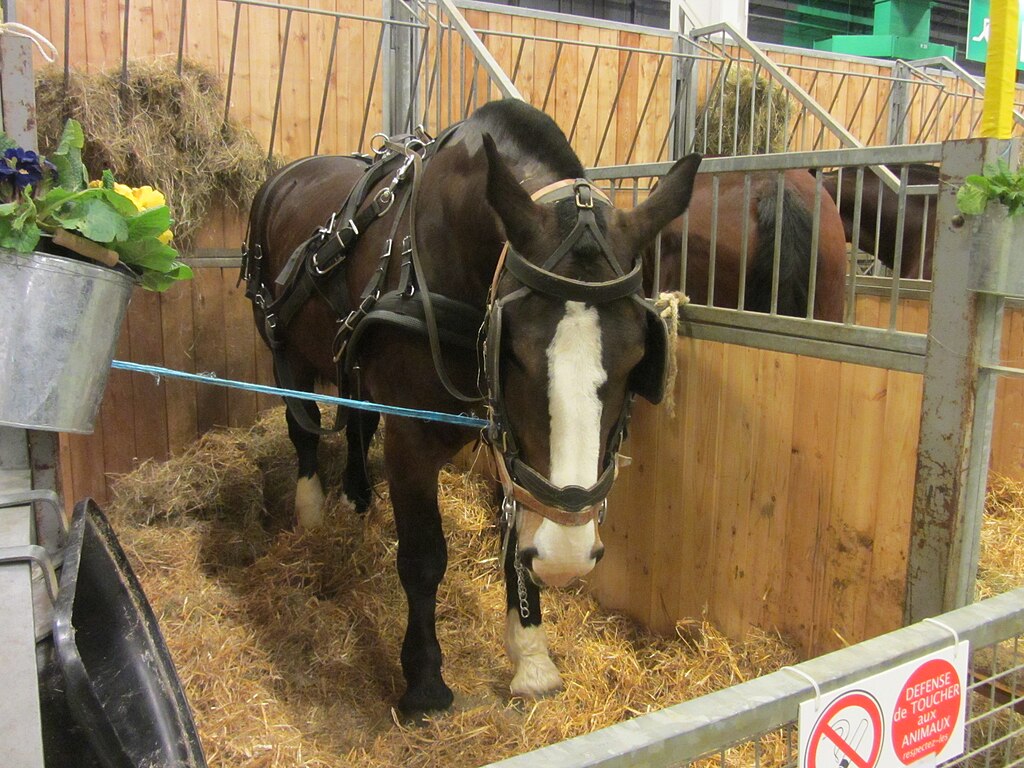
The Norman Cob from the Normandy region of France represents an excellent middle ground between light riding horses and the heaviest draft breeds, offering substantial pulling power while maintaining greater speed and agility than larger draft types. Standing 15.1 to 16.3 hands high and weighing 1,200 to 1,400 pounds, these horses typically display bay, brown, or chestnut coloration with minimal white markings. Their powerful hindquarters, deep chest, and strong bone structure provide excellent pulling capability, while their more refined build allows them to move with greater freedom and speed than heavier draft breeds. Originally developed for agricultural work, carriage pulling, and light artillery movement, Norman Cobs possess remarkable versatility that allows them to excel in multiple disciplines. Their willing temperament, intelligence, and balanced conformation make them particularly valuable for forest work where maneuverability between trees must be combined with sufficient power to extract logs.
Brabant: The Original Belgian
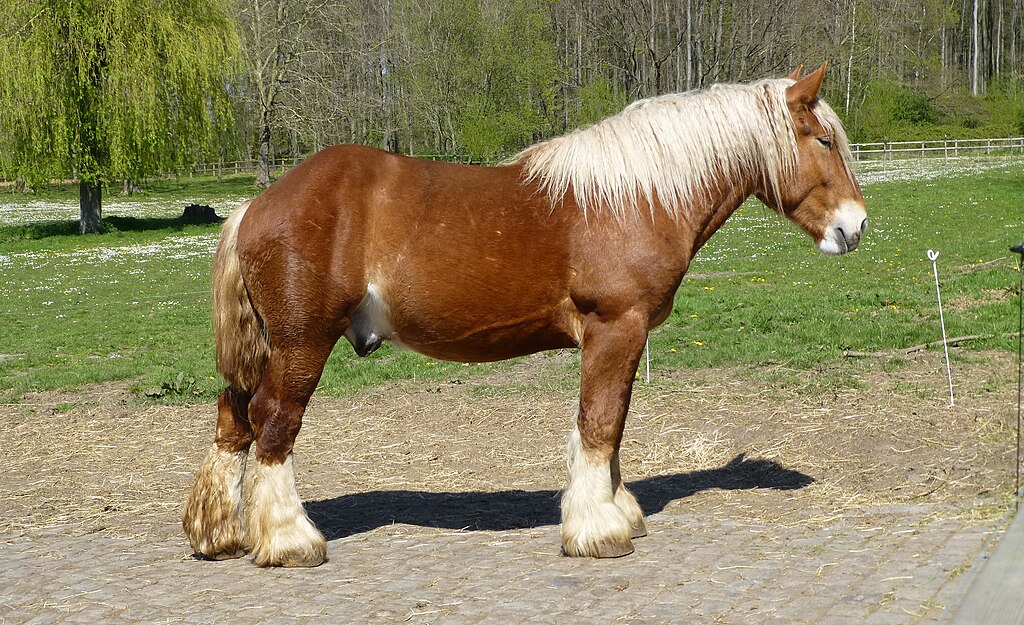
The Brabant represents the original European type of Belgian Draft, maintained in Europe with less selection for refinement than its American Belgian cousin. These massively powerful horses stand 16.2 to 17 hands high and weigh 1,800 to 2,400 pounds, with an exceptionally heavy build characterized by an enormous chest, broad back, and heavily muscled hindquarters. Most commonly chestnut with flaxen mane and tail, Brabants possess significantly more feathering on their legs than American Belgians and maintain a heavier overall appearance. Their incredible strength combined with a docile temperament makes them exceptional for the heaviest pulling tasks, particularly in agricultural settings where maximum power takes precedence over speed. The breed’s relatively low center of gravity provides excellent leverage for moving extremely heavy loads, while their patient disposition allows them to apply steady pressure rather than wasting energy in sudden bursts of effort.
Traits That Make Superior Pulling Horses
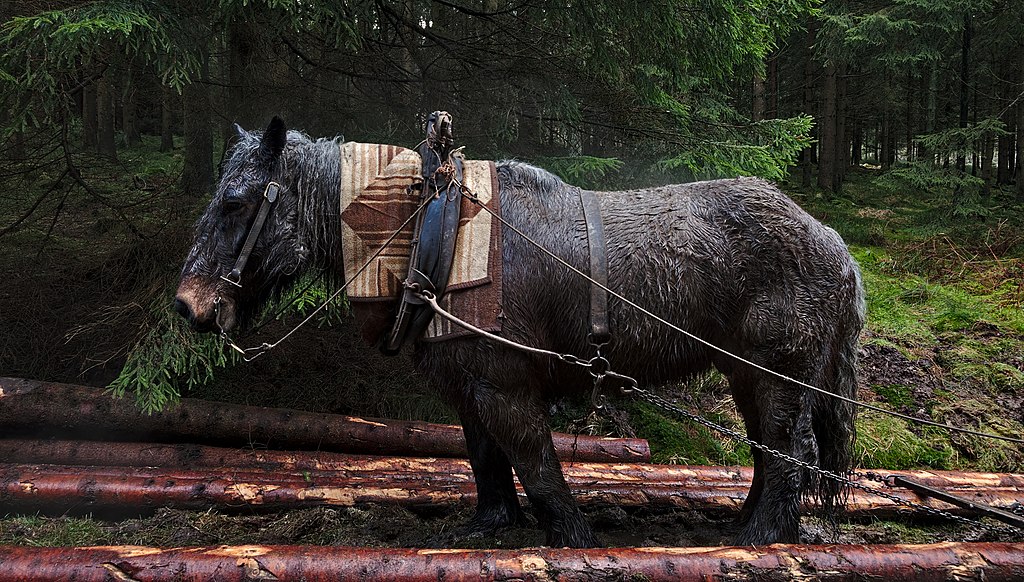
Beyond breed specifications, certain physical and temperamental characteristics consistently appear in horses excelling at heavy pulling tasks. Structurally, the most effective pulling horses possess powerful hindquarters that generate forward thrust, well-sloped shoulders that accommodate the collar without interference, short, strong backs that efficiently transfer power, and broad chests providing ample room for heart and lung capacity essential for sustained effort. Equally important are sound, well-formed hooves with sufficient size to provide traction without slipping, strong hocks that withstand pressure during the pulling stride, and sturdy legs with substantial bone capable of supporting the horse’s weight plus the load being moved. Temperamentally, the best pulling horses demonstrate a willing attitude, patience during hitching and setup, steady response to commands without excitement, and the intelligence to understand when to lean into their work versus when to conserve energy. These combined traits, whether found in purebred draft horses or crossbreds, ultimately determine a horse’s effectiveness for serious pulling tasks.
Training and Care Considerations for Working Draft Horses
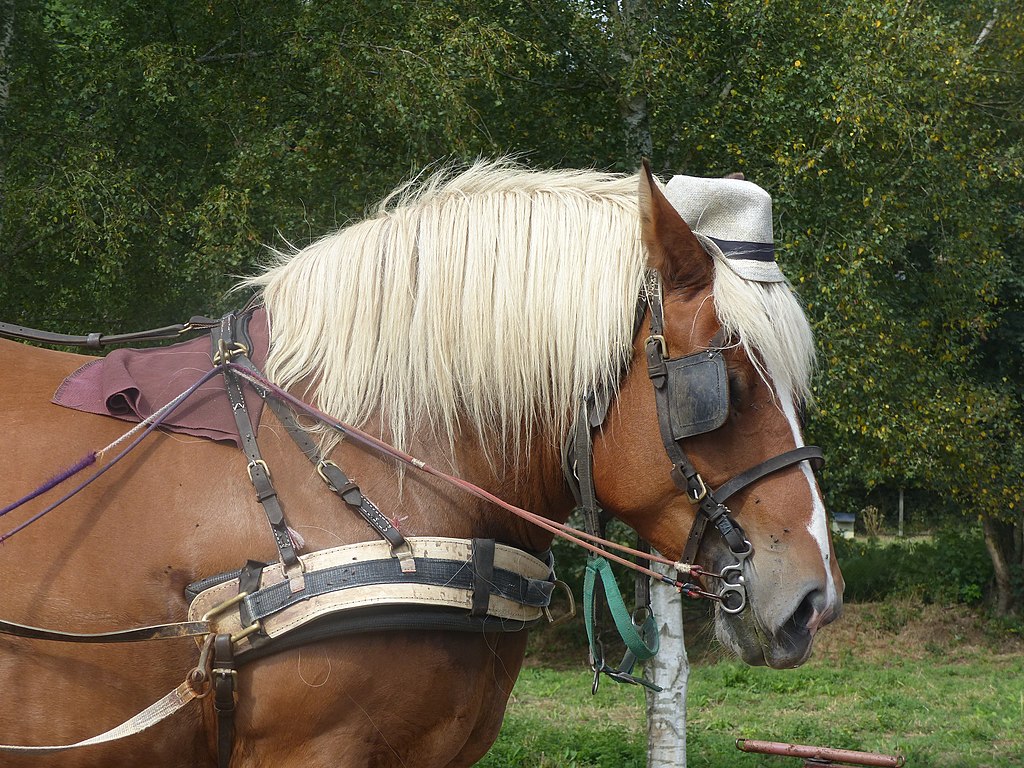
Successfully utilizing draft horses for heavy pulling requires specific training approaches and careful attention to their unique care requirements. Training begins with ground manners and gradually progresses to wearing harness, responding to voice commands, and understanding how to start a load efficiently by leaning into the collar rather than lunging forward. Proper conditioning is essential, with gradual building of strength and endurance through progressive work sessions rather than occasional heavy demands. Draft horses require significant nutritional support, typically consuming 20-30 pounds of hay daily plus appropriate grain supplementation when working regularly, along with constant access to clean water to support their massive bodies. Their substantial hooves need regular farrier attention every 6-8 weeks, often requiring specialized farriers experienced with draft breeds. Additionally, particular attention must be paid to their feathered legs, which can develop skin conditions if not kept clean and dry, especially in wet working conditions. With proper care and training, most draft breeds can work effectively well into their twenties, providing decades of reliable pulling power.
Conclusion
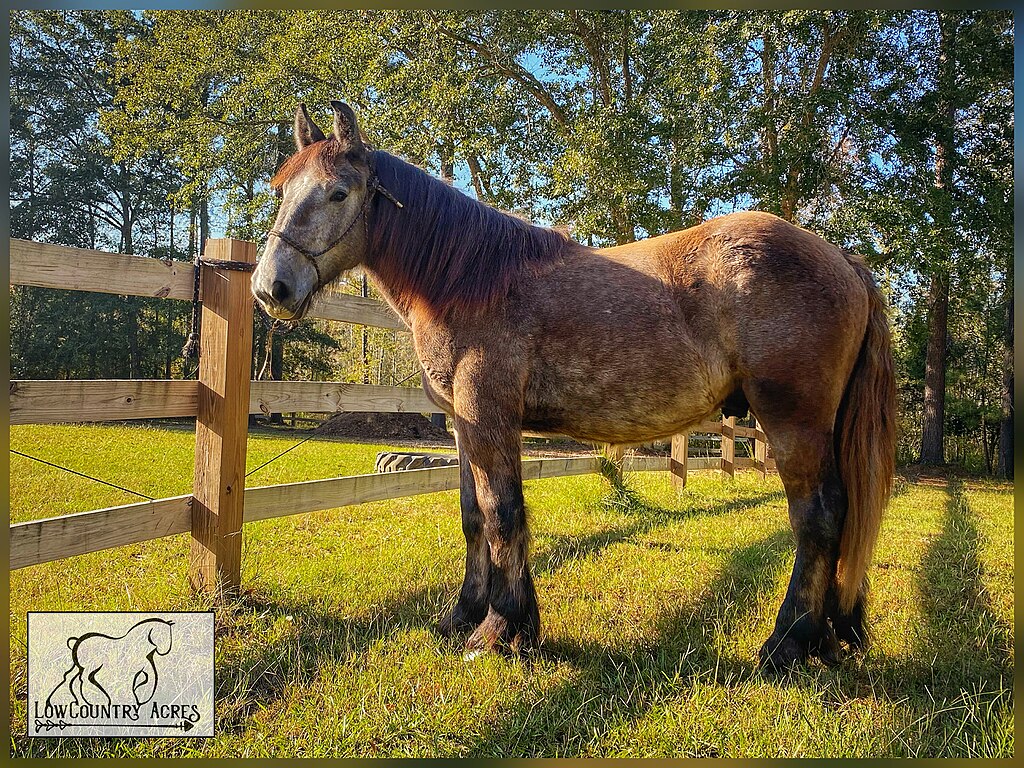
The world of draft horses offers a fascinating blend of historical significance, impressive physical capabilities, and enduring partnerships with humans. Each breed brings unique advantages to heavy pulling tasks, from the raw power of the Belgian and Brabant to the agility of the Percheron and the endurance of the Suffolk Punch. While modern machinery has replaced many traditional draft horse roles, these magnificent animals continue to demonstrate unmatched efficiency in certain environments – whether it’s sustainable logging operations, organic farming practices, or cultural celebrations preserving historical working methods. Beyond their practical applications, draft horses represent an important living connection to our agricultural heritage and a reminder of the remarkable bond between humans and working animals that has shaped civilization for thousands of years. For those seeking the best pulling horses, understanding each breed’s strengths allows for selecting the perfect equine partner – combining the necessary power, temperament, and physical attributes for the specific tasks at hand.

